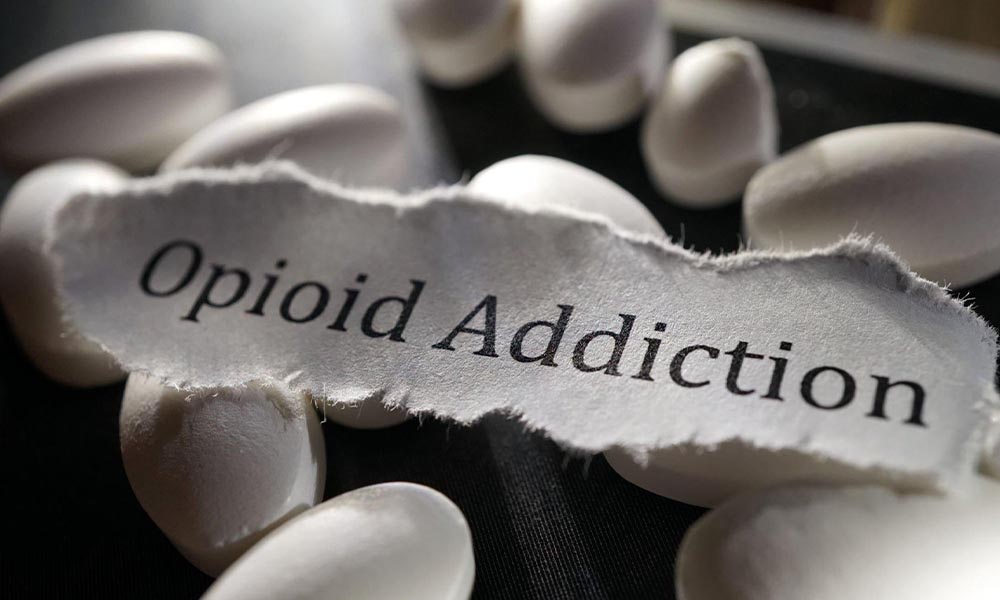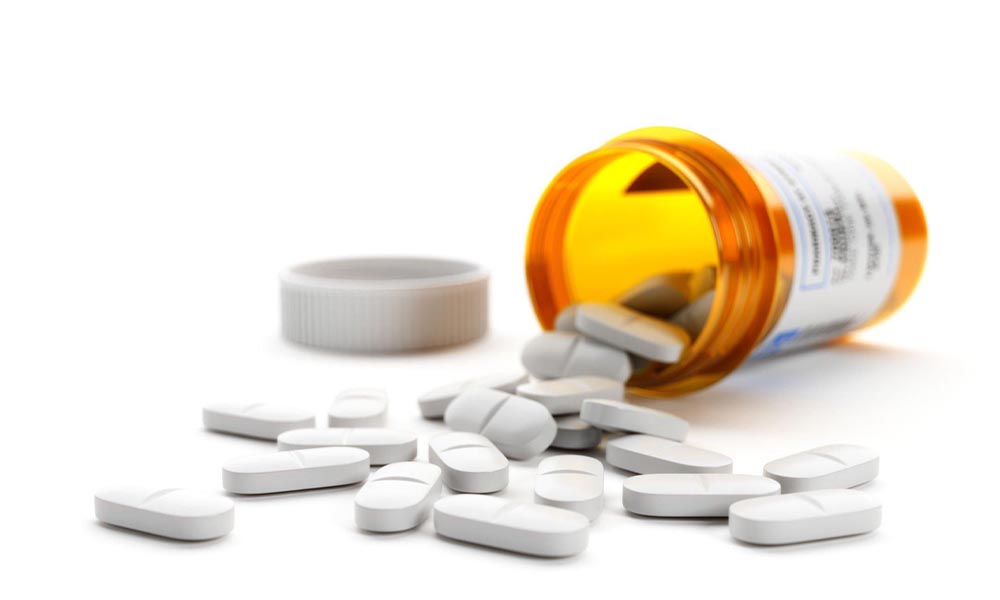Opioid use disorder is a chronic condition characterized by the compulsive use of opioids despite negative consequences. Opioids are a class of drugs that include prescription pain relievers like oxycodone and hydrocodone, as well as illicit substances like heroin. Opioid use disorder is a complex medical condition that affects the brain and body, leading to dependence and addiction.
The misuse of opioids can have severe consequences on an individual’s physical and mental health. It can disrupt personal relationships, impair work or school performance, and increase the risk of overdose and death. Opioid use disorder is a growing public health crisis, with millions of people affected worldwide.
Table of Contents
ToggleCauses and risk factors of opioid use disorder

Opioid use disorder can develop as a result of various factors, including genetic, environmental, and psychological influences. Some individuals may be more susceptible to developing opioid use disorder due to genetic factors that affect how their bodies respond to opioids. Environmental factors, such as easy access to prescription opioids or living in a community with high rates of opioid abuse, can also contribute to the development of the disorder.
Additionally, certain psychological factors can increase the risk of opioid use disorder. Individuals who struggle with chronic pain, mental health disorders, or a history of trauma may be more likely to misuse opioids as a means of self-medication or coping with emotional pain. It’s important to recognize that opioid use disorder is a complex condition with multiple contributing factors, and it’s not solely the result of a lack of willpower or moral character.
Signs and symptoms of opioid use disorder
Recognizing the signs and symptoms of opioid use disorder is crucial for early intervention and treatment. Some common signs of opioid use disorder include:
- Compulsive drug use: Individuals with opioid use disorder often find it difficult to control or stop their opioid use, even when they want to quit. They may experience intense cravings and prioritize drug-seeking behavior over other responsibilities.
- Tolerance and withdrawal: Over time, individuals with opioid use disorder may develop a tolerance to the drug, requiring larger doses to achieve the desired effects. When opioids are reduced or stopped, they may experience withdrawal symptoms such as nausea, sweating, anxiety, and muscle aches.
- Neglecting responsibilities: Opioid use disorder can lead to a decline in personal and professional responsibilities. Individuals may neglect work, school, or family obligations in favor of obtaining and using opioids.
It’s important to note that the signs and symptoms of opioid use disorder can vary from person to person, and not everyone will exhibit all of the same behaviors. If you suspect that you or someone you know may have opioid use disorder, seeking professional help is essential.
The impact of opioid use disorder on individuals and society
Opioid use disorder has a profound impact on individuals and society as a whole. From a personal standpoint, those with opioid use disorder often experience significant physical and mental health problems. The chronic use of opioids can lead to respiratory depression, liver damage, and an increased risk of infectious diseases such as HIV and hepatitis C. Mental health issues, including depression, anxiety, and suicidal thoughts, are also commonly associated with opioid use disorder.
On a societal level, the consequences of opioid use disorder are far-reaching. The economic burden of opioid misuse and addiction is staggering, with costs associated with healthcare, criminal justice, and lost productivity. Opioid-related fatalities have reached epidemic proportions in many countries, placing a significant strain on healthcare systems and communities. The impact of opioid use disorder extends beyond the individual, affecting families, friends, and communities at large.
Understanding the true scope of the impact can help drive efforts to address the crisis and provide support and resources for individuals and communities affected by opioid use disorder.
Understanding the different types of opioids and their effects

Opioids encompass a wide range of drugs, each with its own potency and potential for abuse. It’s essential to understand the different types of opioids and their effects to grasp the complexities of opioid use disorder.
- Prescription opioids: These drugs are commonly prescribed to manage moderate to severe pain. Examples include oxycodone, hydrocodone, and morphine. While they can be effective when used as directed, they carry a high risk of misuse and addiction.
- Heroin: Heroin is an illicit opioid derived from morphine. It is usually injected, smoked, or snorted and provides a rapid and intense high. Heroin is highly addictive and associated with a host of health and social problems.
- Synthetic opioids: Synthetic opioids, such as fentanyl, are potent substances that are often illegally manufactured. They can be up to 100 times stronger than morphine and pose a significant risk of overdose. Synthetic opioids are frequently mixed with other drugs, increasing the likelihood of accidental overdose.
Understanding the various types of opioids and their effects is crucial for healthcare professionals, policymakers, and individuals seeking treatment. It helps inform prevention strategies, treatment approaches, and harm reduction initiatives.
Treatment options for opioid use disorder
Treating opioid use disorder requires a comprehensive approach that addresses the physical, psychological, and social aspects of addiction. There are several evidence-based treatment options available to help individuals recover from opioid use disorder. These include medication-assisted treatment, counseling and therapy, and support groups.
Medication-assisted treatment for opioid use disorder
Medication-assisted treatment (MAT) is considered the gold standard for the treatment of opioid use disorder. It combines the use of medications with counseling and behavioral therapies to address both the physical and psychological aspects of addiction. The medications commonly used in MAT include:
- Methadone: Methadone is a long-acting opioid agonist that helps reduce cravings and withdrawal symptoms. It is typically administered in a controlled setting, such as a specialized clinic.
- Buprenorphine: Buprenorphine is a partial opioid agonist that activates the same receptors as opioids but with a milder effect. It can be prescribed by qualified healthcare providers and taken at home.
- Naltrexone: Naltrexone is an opioid antagonist that blocks the effects of opioids. It is available in both oral and injectable forms and helps prevent relapse by blocking the euphoric effects of opioids.
MAT has been shown to significantly improve treatment outcomes, reduce overdose deaths, and increase retention in treatment programs. It provides individuals with a structured and supportive environment while helping them manage cravings and withdrawal symptoms.
Counseling and therapy for opioid use disorder
Counseling and therapy play a critical role in the treatment of opioid use disorder. These approaches help individuals address the underlying issues that contribute to their addiction and develop coping mechanisms to maintain long-term sobriety. Some common counseling and therapy modalities used in the treatment of opioid use disorder include:
- Cognitive-behavioral therapy (CBT): CBT helps individuals identify and change negative thought patterns and behaviors associated with drug use. It focuses on developing healthier coping strategies to prevent relapse.
- Motivational interviewing: Motivational interviewing is a client-centered approach that aims to enhance motivation and commitment to change. It helps individuals explore their ambivalence towards treatment and build intrinsic motivation for recovery.
- Family therapy: Family therapy involves the participation of family members in the treatment process. It helps improve communication, address family dynamics, and provide support for both the individual with opioid use disorder and their loved ones.
Counseling and therapy provide individuals with the tools and skills they need to navigate the challenges of recovery. They create a safe space for individuals to explore their emotions, address past traumas, and develop a sense of purpose and hope for the future.
Support groups and resources for individuals with opioid use disorder
Support groups and resources play a crucial role in the recovery journey of individuals with opioid use disorder. These groups provide a sense of community, understanding, and mutual support. They offer a safe space for individuals to share their experiences, learn from others, and access valuable resources. Some well-known support groups for individuals with opioid use disorder include:
- Narcotics Anonymous (NA): NA is a fellowship of individuals who share their experiences, strengths, and hopes in recovering from addiction. It follows a 12-step program and provides a supportive environment for individuals seeking long-term recovery.
- SMART Recovery: SMART Recovery is a science-based program that offers tools and techniques to help individuals overcome addictive behaviors. It focuses on self-empowerment and teaches practical skills for managing cravings and maintaining sobriety.
- Online communities and forums: Online communities and forums provide a virtual space for individuals to connect with others who have similar experiences. They offer a wealth of information, support, and encouragement, particularly for those who may face barriers to in-person support.
In addition to support groups, there are various resources available to individuals with opioid use disorder and their loved ones. These resources include helplines, treatment directories, educational materials, and online platforms that provide information and guidance on addiction and recovery.
The road to recovery: Steps and strategies for long-term sobriety

Recovery from opioid use disorder is a lifelong journey that requires commitment, perseverance, and ongoing support. While the path to sobriety may vary for each individual, there are common steps and strategies that can help promote long-term recovery.
Step 1: Acknowledge the problem and seek help
The first step towards recovery is acknowledging the presence of a problem and recognizing the need for help. It takes courage to confront addiction, but reaching out for support is a crucial step towards healing.
Step 2: Detoxification and withdrawal management
For individuals with opioid use disorder, detoxification is often the first step in the treatment process. Detoxification involves the removal of opioids from the body and managing the associated withdrawal symptoms. Medical supervision during this process ensures safety and comfort.
Step 3: Engage in evidence-based treatment
Engaging in evidence-based treatment, such as medication-assisted treatment and counseling, is essential for long-term recovery. These treatments address the physical and psychological aspects of addiction, providing individuals with the tools and support they need to maintain sobriety.
Step 4: Develop a relapse prevention plan
Relapse prevention is a critical aspect of long-term recovery. Developing a relapse prevention plan involves identifying triggers, developing coping strategies, and building a supportive network. It’s important to have a plan in place to navigate challenges and prevent relapse.
Step 5: Cultivate a healthy lifestyle
Adopting a healthy lifestyle can significantly support recovery. This includes engaging in regular exercise, eating a balanced diet, getting enough sleep, and practicing stress management techniques. A healthy lifestyle promotes overall well-being and reduces the risk of relapse.
Step 6: Prioritize self-care and emotional well-being
Self-care is crucial in maintaining long-term sobriety. It involves prioritizing one’s physical, emotional, and mental well-being. Engaging in activities that bring joy, practicing self-compassion, and seeking professional help for any underlying mental health issues are essential components of self-care.
Step 7: Build a support network
Building a strong support network is vital in the recovery process. Surrounding oneself with positive influences, attending support group meetings, and staying connected with loved ones can provide invaluable support and encouragement.
Recovery is a dynamic and ongoing process that requires continuous effort and commitment. Each step taken towards sobriety brings individuals closer to a healthier, more fulfilling life.
Overcoming challenges and relapse prevention in opioid use disorder recovery
Overcoming challenges and preventing relapse is an integral part of the recovery journey for individuals with opioid use disorder. It is important to recognize that recovery is not a linear process, and setbacks may occur along the way. However, with the right strategies and support, individuals can overcome challenges and maintain long-term sobriety.
Identify and address triggers
Triggers are situations, people, or emotions that can lead to cravings and potentially relapse. It is essential to identify personal triggers and develop strategies to manage them effectively. This may involve avoiding certain people or places associated with drug use, practicing stress reduction techniques, or engaging in alternative activities that provide a sense of fulfillment.
Develop healthy coping mechanisms
Developing healthy coping mechanisms is crucial in managing cravings and preventing relapse. It’s important to find alternative ways to deal with stress, pain, or emotional discomfort. This may include engaging in hobbies, practicing mindfulness or meditation, seeking support from loved ones, or participating in therapy or counseling.
Stay connected with support networks
Maintaining connections with support networks, such as support groups, therapists, and sober friends, is essential in overcoming challenges and preventing relapse. These individuals can provide guidance, encouragement, and accountability during difficult times. Regular attendance at support group meetings and maintaining open communication with one’s support network can significantly enhance recovery outcomes.
Practice self-care and stress management
Self-care and stress management are essential components of relapse prevention. Engaging in activities that promote physical, emotional, and mental well-being can help individuals manage stress and maintain sobriety. This may include exercise, healthy eating, adequate sleep, relaxation techniques, and seeking professional help for any co-occurring mental health conditions.
Seek professional help when needed
It’s important to recognize when additional professional help is necessary. If individuals find themselves struggling with cravings, emotional distress, or other challenges that jeopardize their recovery, reaching out to a healthcare professional or treatment provider is crucial. They can provide guidance, reassessment of treatment plans, and additional resources to support long-term sobriety.
By implementing these strategies and seeking appropriate support, individuals can overcome challenges and maintain their recovery journey.
Supporting a loved one with opioid use disorder
Supporting a loved one with opioid use disorder can be challenging, but it is crucial for their recovery journey. Here are some ways to offer support:
Educate yourself
Learn about opioid use disorder, its causes, and available treatment options. Understanding the condition will help you provide informed support.
Communicate openly
Maintain open and honest communication with your loved one. Express your concerns without judgment and listen to their experiences and challenges.
Encourage treatment
Encourage your loved one to seek professional help and offer to assist them in finding appropriate treatment options. Provide emotional support throughout the process.
Set boundaries
It is important to set boundaries and communicate them clearly. This may include not enabling their drug use or refusing to bail them out of difficult situations. Boundaries help protect both parties and encourage accountability.
Offer support without enabling
Support your loved one’s recovery journey without enabling their drug use. This may involve avoiding situations where drugs are present, encouraging healthy activities, and offering emotional support.
Breaking the stigma surrounding opioid use disorder

Opioid use disorder is a medical condition that requires compassion, understanding, and evidence-based treatment. Breaking the stigma surrounding opioid use disorder is essential for individuals to feel comfortable seeking help and support. Educating the community about the nature of addiction and sharing stories of recovery can help challenge misconceptions and promote empathy.
Conclusion
Understanding opioid use disorder is the first step towards effective treatment and recovery. With the right support, treatment options, and strategies for relapse prevention, individuals can overcome opioid use disorder and lead fulfilling lives in long-term sobriety. It is important to remember that recovery is a journey that requires ongoing commitment and support. By breaking the stigma and providing compassionate care, we can help individuals with opioid use disorder reclaim their lives and build a brighter future.


